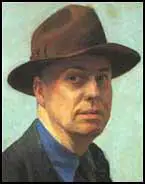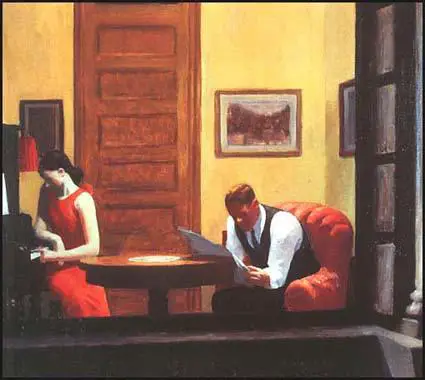Edward Hopper

Edward Hopper, the son of an owner of a dry-goods store, was born in Nyack on 22nd July 1882. He registered with the Correspondence School of Illustrating in 1899. He studied under Robert Henri and William Merritt Chase at the New York School of Art from 1900 to 1906. A fellow student was George Bellows.
In 1913 the ideas of Henri inspired the International Exhibition of Modern Art (the Armory Show) held in New York City. Some of Hopper's work was included in the exhibition held at the 69th Regiment Armory. It included over 1,300 works, including 430 from Europe. The exhibition, held between 17th February and 15th March, received around 250,000 visitors.
Stephen Coppel, the author of The American Scene (2008) has pointed out: "Between 1915 and 1923 Hopper made nearly seventy etchings and drypoints. His early etchings were executed directly on to the copper plate; preparatory sketches exist for his later prints. His etchings went through many changes of state as minor adjustments were made to the plate. With one exception, he printed all his own plates, using an old money-printing press."
Hopper established a studio at Washington Square North in Greenwich Village, where he remained for the next fifty-four years. Until 1924 he worked as a freelance commercial artist, a role he detested. An exhibition of his watercolours at the Frank K. M. Rehn was so successful he could now concentrate on being a fine artist.

Hopper's distinctive style emerged soon after becoming a full-time painter and changed very little throughout his career. The central theme of his work was the loneliness of city life. His paintings are usually set in places such as motel rooms, filling stations, cafeterias, bars and offices. Hopper's work soon gained recognition and in 1933 the Museum of Modern Art gave him a retrospective exhibition.

Edward Hopper died on 15th May, 1967.
Primary Sources
(1) Stephen Coppel, The American Scene (2008)
Between 1915 and 1923 Hopper made nearly seventy etchings and drypoints. His early etchings were executed directly on to the copper plate; preparatory sketches exist for his later prints. His etchings went through many changes of state as minor adjustments were made to the plate. With one exception, he printed all his own plates, using an old money-printing press.

